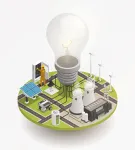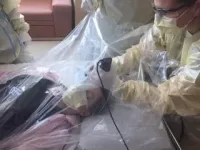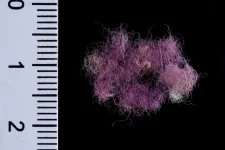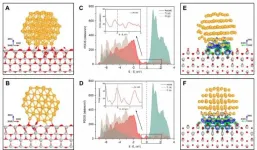New biosensors quickly detect coronavirus proteins and antibodies
When mixed with fluid from a nasal swab or blood sample, these protein sensors emit light within minutes.
2021-01-28
(Press-News.org) Scientists have created a new way to detect the proteins that make up the pandemic coronavirus, as well as antibodies against it. They designed protein-based biosensors that glow when mixed with components of the virus or specific COVID-19 antibodies. This breakthrough could enable faster and more widespread testing in the near future. The research appears in Nature.
To diagnose coronavirus infection today, most medical laboratories rely on a technique called RT-PCR, which amplifies genetic material from the virus so that it can be seen. This technique requires specialized staff and equipment. It also consumes lab supplies that are now in high demand all over the world. Supply-chain shortfalls have slowed COVID-19 test results in the United States and beyond.
In an effort to directly detect coronavirus in patient samples without the need for genetic amplification, a team of researchers led by David Baker, professor of biochemistry and director of the Institute for Protein Design at UW Medicine, used computers to design new biosensors. These protein-based devices recognize specific molecules on the surface of the virus, bind to them, then emit light through a biochemical reaction.
Antibody testing can reveal whether a person has had COVID-19 in the past. It is being used to track the spread of the pandemic, but it ,too, requires complex laboratory supplies and equipment.
The same team of UW researchers also created biosensors that glow when mixed with COVID-19 antibodies. They showed that these sensors do not react to other antibodies that might also be in the blood, including those that target other viruses. This sensitivity is important for avoiding false-positive test results.
"We have shown in the lab that these new sensors can readily detect virus proteins or antibodies in simulated nasal fluid or donated serum, said Baker. "Our next goal is to ensure they can be used reliably in a diagnostic setting. This work illustrates the power of de novo protein design to create molecular devices from scratch with new and useful functions."
Beyond COVID-19, the team also showed that similar biosensors could be designed to detect medically relevant human proteins such as Her2 (a biomarker and therapy target for some forms of breast cancer) and Bcl-2 (which has clinical significance in lymphoma and some other cancers), as well as a bacterial toxin and antibodies that target Hepatitis B virus.
INFORMATION:
This research was supported by the National Institutes of Health, Howard Hughes Medical Institute, Air Force Office of Scientific Research, The Audacious Project, Eric and Wendy Schmidt by recommendation of the Schmidt Futures, Washington Research Foundation, Nordstrom Barrier Fund, The Open Philanthropy Project, LG Yonam Foundation, BK21 PLUS project of Korea, United World Antiviral Research Network (UWARN) which is one of the Centers Researching Emerging Infectious Diseases, Gree Real Estate, and "la Caixa" Foundation.
This news release was written by Ian Haydon of the UW Medicine Institute for Protein Design.
[Attachments] See images for this press release:
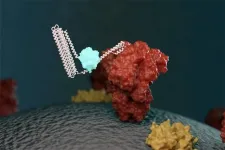
ELSE PRESS RELEASES FROM THIS DATE:
2021-01-28
Housing instability and homelessness are widely understood to have an impact on health, and certain housing problems have been linked to specific childhood health conditions, such as mold with asthma. But it has not been clear how overall housing quality may affect children--especially those who are at risk from other social determinants of health such as food insecurity or poverty.
A new nationally representative study in the Journal of Child Health Care, led by researchers at Nationwide Children's Hospital, has found poor-quality housing is independently associated with poorer pediatric health, ...
2021-01-28
As states and municipalities begin to roll out mass vaccination campaigns, some people have dared to ask: When will it be safe to resume "normal" activities again? For those in most parts of the United States, the risk of COVID-19 infection remains extremely high.
People now have access to better real-time information about infection rates and transmission at the county or city level, but they still need a framework to help them decide what is safe to do. Social distancing and shutting businesses have reduced the number of cases, but there is mounting pressure to reopen businesses and classrooms.
Life is likely to continue in this limbo for some time. A new model co-authored by ...
2021-01-28
A University of Otago study explored factors which influence Americans' levels of concern over climate change, providing discussion on how those factors could impact mitigation efforts.
A key thread of the research examined the ability of people to visualize the future. Results showed that while 74 per cent of respondents were concerned about climate change, only 29 per cent discussed lower carbon options when asked to describe travel in the year 2050.
"This suggests actively envisioning a sustainable future was less prevalent than climate change concern. So while the majority were concerned, ...
2021-01-28
UNIVERSITY PARK, Pa. -- People who do not accept inequality are more likely to negatively evaluate companies that have committed wrongdoings than people who do accept inequality, and this response varies by culture, according to researchers at Penn State. The team also found that companies can improve their standing with consumers when they offer sincere apologies and remedies for the harm they caused to victims.
"Some prominent examples of company moral transgressions include Nike's and Apple's questionable labor practices in developing countries, BP's oil spill in the Gulf of Mexico and Volkswagen's emissions scandal," said Felix Xu, graduate student in marketing at Penn State.
In their paper, which published on Jan. 22 in the Journal of Consumer Research, the team ...
2021-01-28
Thermoelectric materials, which can generate an electric voltage in the presence of a temperature difference, are currently an area of intense research; thermoelectric energy harvesting technology is among our best shots at greatly reducing the use of fossil fuels and helping prevent a worldwide energy crisis. However, there are various types of thermoelectric mechanisms, some of which are less understood despite recent efforts. A recent study from scientists in Korea aims to fill one such gap in knowledge. Read on to understand how!
One of these mechanisms mentioned earlier is the spin Seebeck effect (SSE), which was discovered in 2008 by a research team led by Professor Eiji Saitoh from Tokyo University, Japan. The SSE is a phenomenon in which ...
2021-01-28
DALLAS - Jan. 28, 2021 - Simulation can be a viable way to quickly evaluate and refine new medical guidelines and educate hospital staff in new procedures, a recent study from UT Southwestern's Department of Pediatrics shows. The findings, published recently in the journal Pediatric Quality and Safety and originally shaped around new COVID-19-related pediatric resuscitation procedures at UTSW and Children's Health, could eventually be used to help implement other types of guidelines at medical centers nationwide.
For decades, U.S. hospitals have used the same standard procedures ...
2021-01-28
"King Solomon made for himself the carriage; he made it of wood from Lebanon. Its posts he made of silver, its base of gold. Its seat was upholstered with purple, its interior inlaid with love." (Song of Songs 3:9-10)
For the first time, rare evidence has been found of fabric dyed with royal purple dating from the time of King David and King Solomon.
While examining the colored textiles from Timna Valley - an ancient copper production district in southern Israel - in a study that has lasted several years, the researchers were surprised to find remnants of woven fabric, a tassel and fibers of wool dyed with royal purple. Direct radiocarbon ...
2021-01-28
(For Immediate Release--Singapore--January 28, 2021)-- In the phase II CodeBreak 100 trial, sotorasib provided durable clinical benefit with a favorable safety profile in patients with pretreated non-small cell lung cancer (NSCLC) and who harbor KRAS p.G12C mutations, validating CodeBreak 100's phase I results, according to research presented today at the International Association for the Study of Lung Cancer World Conference on Lung Cancer.
Outcome in patients with advanced NSCLC on second- or third-line therapies is poor, with a response rate of less than 20% and median progression-free survival of fewer than four months. Approximately 13% of patients with lung adenocarcinomas harbor KRAS p.G12C mutations.
Sotorasib is a first-in-class small molecule that specifically ...
2021-01-28
An international joint research team from the Shanghai Advanced Research Institute of the Chinese Academy of Sciences, along with Zhejiang University and the Technical University of Denmark, reported an in-situ strategy to manipulate interfacial structure with atomic precision during catalytic reactions. Results were published in the latest issue of Science.
The interface between nanoparticles and substrates plays a critical role in heterogeneous catalysis because most active sites are located at the perimeter of the interface. It is generally believed that this interface is immobile and unchangeable, thus can hardly be adjusted in reactive environments. As a result, it has been challenging to promote catalytic activity through precise control of the interfacial ...
2021-01-28
The emergence of SARS-CoV-2 virus variants that are adding twists in the battle against COVID-19 highlight the need for better genomic monitoring of the virus, says Katia Koelle, associate professor of biology at Emory University.
"Improved genomic surveillance of SARS-CoV-2 across states would really help us to better understand how the virus causing the pandemic is evolving and spreading in the United States," Koelle says. "More federal funding is needed, along with centralized standards for sample collection and genetic sequencing. Researchers need access to such metadata to better track how the virus is spreading geographically, and to identify any new variants ...
LAST 30 PRESS RELEASES:
[Press-News.org] New biosensors quickly detect coronavirus proteins and antibodies
When mixed with fluid from a nasal swab or blood sample, these protein sensors emit light within minutes.


